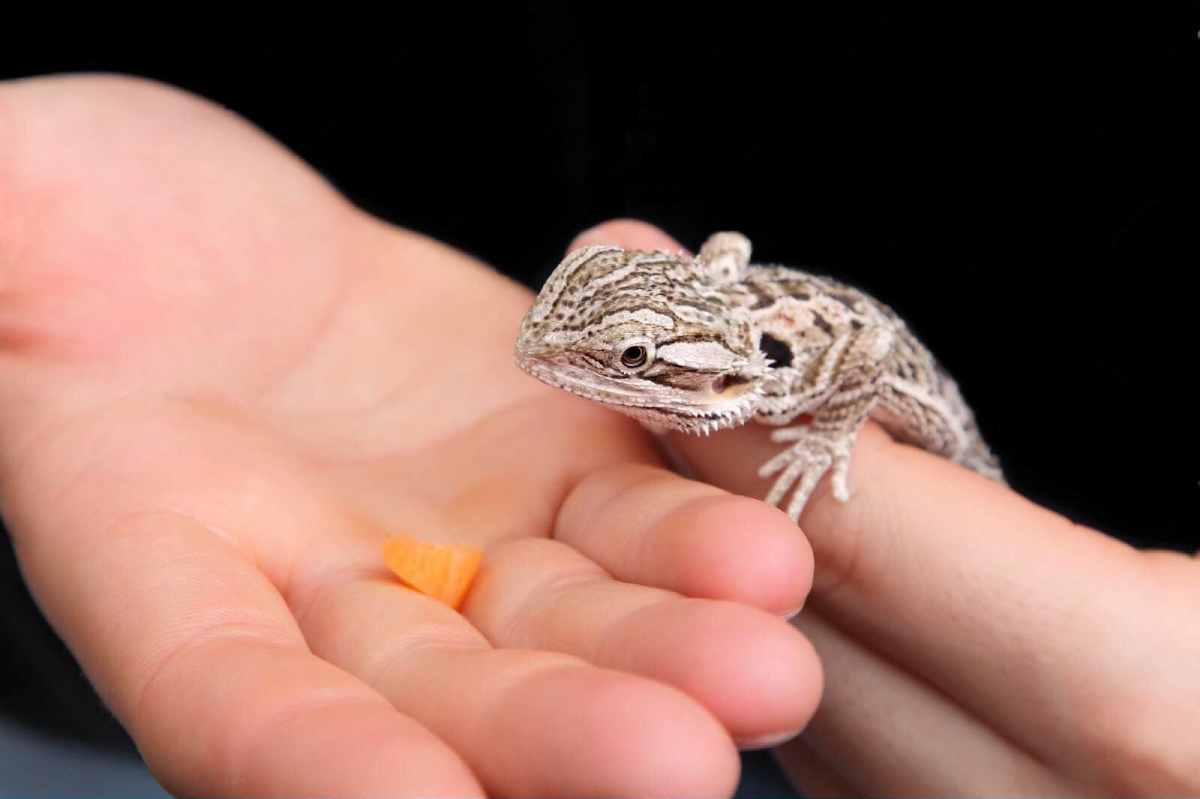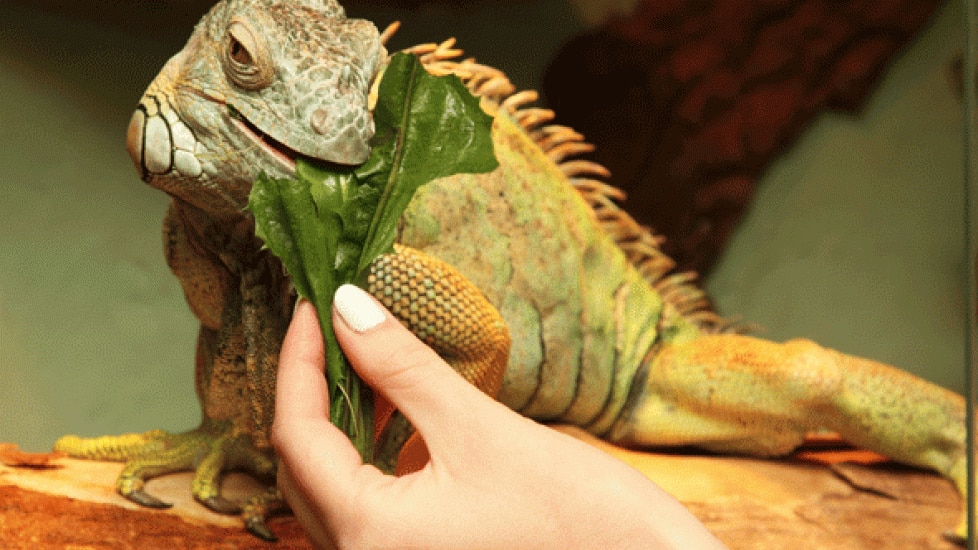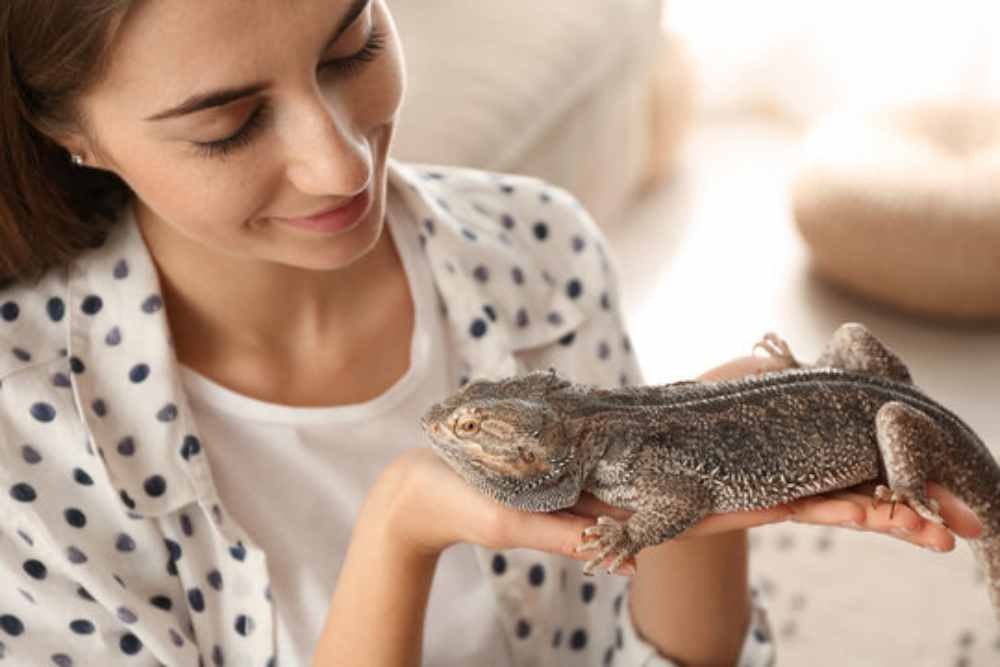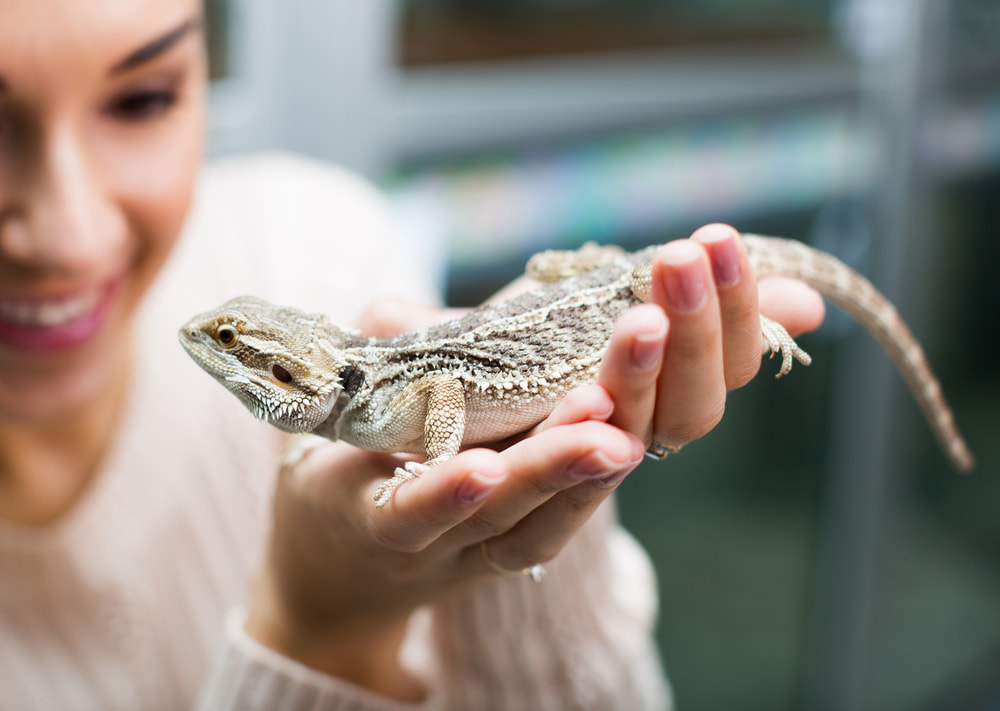
How to Feed and Handle Pet Lizards: A Comprehensive Guide
Owning a pet lizard can be an incredibly rewarding experience. Lizards have a fascinating look, bright colours, and unique behaviours. They give us a glimpse into the lives of some of the oldest and most diverse creatures on Earth. Caring for a lizard involves key responsibilities. This is especially true for feeding and handling them safely. This guide gives you all the key info to help your pet lizard thrive. From understanding the lizard diet to learning proper handling techniques, we’ve got you covered.

Quick Guide: How to Feed and Handle Pet Lizards
- Know Your Lizard’s Diet: Ensure you provide the correct diet for your lizard’s species. Herbivores, carnivores, and omnivores have different nutritional needs.
- Feeding Frequency: Juvenile lizards require daily feedings. Adults typically eat every other day or less often.
- Portion Control: Offer food that is no larger than the space between your lizard’s eyes to prevent overfeeding.
- Supplements: Dust your lizard’s food with calcium and vitamin D3 as needed. This is especially true for species that require UVB light.
- Handling Safely: Approach your lizard calmly, support its body, and limit handling time to reduce stress.
- Hydration: Always provide fresh water and ensure your lizard stays hydrated.
- Create a Suitable Enclosure: Ensure the right temperature, UVB lighting, and humidity levels for your lizard’s species.
Key Benefits of Proper Lizard Care
Caring for a pet lizard goes beyond simply feeding them. Proper care is integral to your pet’s well-being and longevity. Here are some of the key benefits of providing excellent care for your pet lizard:
- Improved Health: A proper diet ensures your lizard gets the right nutrients. This prevents health issues that may arise from nutritional deficiencies.
- Better Bonding: Handling your lizard safely and building trust with them fosters a strong, healthy bond.
- Longer Lifespan: Lizards with proper care can live much longer, often exceeding their average lifespan in the wild.
- Less Stress: Safe handling lowers stress. This helps promote healthier behaviours and improves digestion.
Caring for these key parts of your pet’s life can make your time together more fun. It also helps your pet live a long and happy life.
Pro Tip: Handle your lizard gently and avoid sudden movements to prevent startling it. This helps build trust and reduces stress for both you and your pet.
The Best Lizard Diet: Understanding Nutritional Needs
Like all animals, lizards have specific dietary needs depending on their species. Some lizards are herbivores, others are carnivores, and some are omnivores. Knowing your lizard’s needs is key to giving it the right diet and keeping it healthy.
Herbivorous Lizards
Herbivorous lizards, like the Green Iguana, thrive on a diet of leafy greens, vegetables, and fruits. To provide the best nutrition:
- Leafy Greens: Offer a variety of dark, leafy greens like collard greens, dandelion greens, and mustard greens.
- Vegetables: Squash, carrots, and bell peppers are excellent additions.
- Fruits: A small amount of fruits like apples, strawberries, and bananas can be given occasionally.
It’s important to avoid feeding your herbivorous lizard lettuce, as it lacks nutritional value. A balanced diet will help ensure they receive the necessary vitamins and minerals.
Carnivorous Lizards
Carnivorous lizards, such as the Leopard Gecko, primarily eat insects. It’s essential to feed them a variety of live prey, such as crickets, mealworms, and roaches. Before you feed these insects to your lizard, gut-load them. This means giving them nutritious foods. This way, they will pass on those nutrients to your pet.
Omnivorous Lizards
Like the Bearded Dragon, Omnivorous lizards eat animal protein and plant matter. When feeding an omnivore:
- Insects: For younger Bearded Dragons focus on insects such as crickets, dubia roaches, and mealworms.
- Vegetables: For adults, offer a variety of vegetables like kale, mustard greens, and sweet potatoes.
Be sure to adjust the proportion of animal protein and plant matter based on the age of the lizard. Young lizards need more protein, while adults benefit from more vegetables.
Lizard Feeding Guide: Tips and Techniques
Feeding your lizard involves more than just knowing what to offer them. Here are some key tips and techniques to ensure your lizard’s diet is as healthy as possible.
Timing and Frequency
- Juvenile Lizards: Feed juvenile lizards once or twice daily, depending on the species. They have higher energy needs, so regular feeding is necessary for growth.
- Adult Lizards: Adult lizards, especially larger species, typically only need food every 2-3 days. However, this varies by species, so always check your lizard’s specific needs.
Portion Control
Overfeeding is a common mistake that can lead to obesity and health problems. To avoid this, feed your lizard portions that are no larger than the space between their eyes. Overfeeding not only affects your pet’s health but can also lead to an unbalanced gut.
Supplements
Some species, like herbivores and omnivores, might need calcium and vitamin D3 supplements. This is important if they don’t get enough UVB light. Dust their food with these supplements regularly, as recommended by your vet. This prevents deficiencies.
Important: Always monitor your lizard’s health by observing their behaviour and feeding habits. If you notice any signs of illness, consult a reptile vet immediately.

Handling Pet Lizards Safely: Building Trust and Confidence
Lizards are prey animals, which means they can be skittish and easily frightened. When handling a lizard, it’s crucial to approach them gently and with patience. Proper handling is key to building trust and confidence between you and your pet.
Understanding Lizard Behaviour
Lizards communicate through body language. Understanding these signals can help you gauge their mood. Signs that a lizard may be stressed include:
- Tail Flicking: This is often a sign of anxiety or agitation.
- Hissing: Hissing is a defensive behaviour, indicating that your lizard feels threatened.
- Trying to Escape: If your lizard tries to escape or hides, it’s a clear sign they are not comfortable.
Safe Handling Techniques
To handle your lizard safely and with minimal stress:
- Approach Slowly: Sudden movements can scare your lizard. Always approach calmly and from the side.
- Support the Body: When picking up your lizard, ensure that you support its body properly. Never pick up a lizard by its tail, as this can cause injury.
- Limit Handling Time: Start with short handling sessions to allow your lizard to get accustomed to your presence. Gradually increase the handling time as they become more comfortable.
Lizards need to feel secure when handled, and trust can take time to build. Be patient and avoid handling them too frequently, especially in the beginning.
Additional Expert Tips & Common Mistakes to Avoid
Here are some additional expert tips and common mistakes that lizard owners should avoid:
Best Practices
- Research Your Species: Each species has different care requirements. Tailor your feeding and handling techniques to suit your specific lizard’s needs.
- Create a Routine: Lizards thrive on consistency. Having a regular feeding and handling schedule will help your lizard feel more secure.
- Provide Fresh Water: Always ensure that fresh water is available to your lizard. Many species will drink from a shallow dish. Others may require misting for hydration.
Common Mistakes
- Neglecting Hydration: Failing to provide adequate hydration can cause dehydration. This leads to a range of health issues. Always provide water and ensure proper humidity levels.
- Improper Enclosure Setup: A suitable habitat is crucial for your lizard’s well-being. Ensure that the temperature, UVB lighting, and humidity are appropriate for your lizard’s species.
- Overfeeding: This can cause obesity and stress in your lizard’s digestive system. Always follow the recommended feeding guidelines for your species.
Advanced Insights: Expert Recommendations
If you want to take your lizard care to the next level, here are some advanced insights and recommendations from experts:
Observe Natural Behaviours
Spend time watching your lizard in its enclosure. This not only helps you understand its needs but also gives you a better idea of its health and well-being. Pay attention to their activity levels, feeding habits, and interactions with their environment.
Consult a Herpetologist
Are you unsure about the best care practices for your lizard? Don’t hesitate to consult a herpetologist or reptile specialist. These experts can give you advice based on your lizard’s species. This way, your pet gets the best care possible.
Environmental Enrichment
Adding things to your lizard’s home can lower stress. Consider climbing branches, rocks, or hiding spots. It also keeps your pet mentally active. A diverse and engaging environment is key to a happy and healthy lizard.
FAQ: Feeding and Handling Pet Lizards
How often should I feed my pet lizard?
Feeding frequency depends on your lizard’s age and species. Juvenile lizards typically need to be fed once or twice a day. Adults usually eat every other day or less frequently for larger species.
Can I feed my pet lizard only vegetables?
It depends on your lizard’s species. Herbivorous lizards, like Green Iguanas, require a vegetable-based diet. Carnivorous lizards, such as Leopard Geckos, need live insects. Omnivores, like Bearded Dragons, need a mix of both.
Do pet lizards need supplements?
Yes, many lizards require calcium and vitamin D3 supplements. This is especially true for species that need UVB light. These supplements should be dusted on their food as directed by a vet.
How should I handle my pet lizard?
Always approach your lizard calmly and avoid sudden movements. Support its entire body, including the tail and handle, for short periods. Gradually increase time as your lizard becomes more comfortable.
How can I tell if my lizard is stressed?
Common signs of stress in lizards include tail flicking, hissing, puffing up, or trying to escape. Pay attention to their body language and adjust handling or environment if needed.
What type of enclosure is best for my lizard?
The enclosure should be appropriate for your lizard’s species. A glass terrarium or secure plastic bin works well. It should be large enough for your lizard to move comfortably. The proper temperature, humidity, and UVB lighting should be there.
Do lizards drink water?
Yes, lizards need fresh water available at all times. Some species may also benefit from misting to help with hydration, especially if they live in more humid environments.
Can I keep different types of lizards together?
It is generally not recommended to house different species of lizards together. They have different needs and may become territorial or aggressive. It’s safer to house them separately unless the species are known to be compatible.
How do I know if my lizard is healthy?
Regularly observe your lizard’s behaviour, eating habits, and appearance. Healthy lizards are active, have clear eyes, and shed their skin smoothly. If you notice lethargy, weight loss, or abnormal behaviour, consult a vet.
Should I mist my lizard’s enclosure?
Some species, like those from tropical climates, benefit from misting to maintain humidity levels. However, be sure to know the specific humidity needs of your species. Too much moisture can lead to health problems like respiratory issues or skin infections.

Knowing Your Pet Lizard
Caring for a pet lizard means knowing its needs. This includes its diet and how to handle it. To create the best environment for your pet, be attentive, patient, and well-informed. Whether you’re a reptile expert or just starting out, success comes from caring for your lizard and respecting its special needs.
Your lizard is a long-term commitment. By using this guide, you’ll ensure a happy life for both you and your pet.
Are you ready to start your journey with a pet lizard? By using these tips, you can provide the care and environment your lizard needs to thrive. Enjoy the bond you’ll create with your fascinating reptilian companion!


